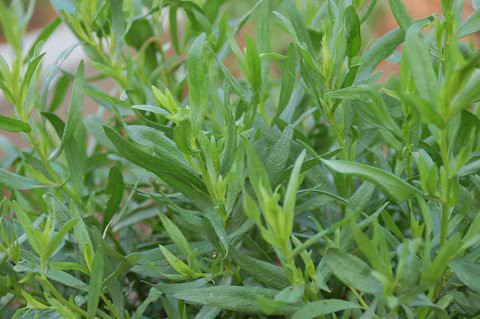Disclaimer: This Materia Medica is provided for informational purposes only and should not replace professional medical advice. Please consult with a qualified healthcare practitioner or herbalist before using any herbal remedies.
Materia Medica: Tarragon (Artemisia dracunculus)
Introduction: Tarragon, scientifically known as Artemisia dracunculus, is a fragrant and versatile herb that has been valued for its culinary and medicinal properties for centuries. This Materia Medica provides an in-depth exploration of tarragon’s botanical characteristics, historical uses, medicinal properties, and safety considerations.
Botanical Description:
- Family: Asteraceae (Compositae)
- Genus: Artemisia
- Species: Artemisia dracunculus
- Common Names: Tarragon, French Tarragon, Dragon’s Wort
- Growth Habitat: Tarragon is a perennial herb native to Eurasia. It typically reaches a height of 2-4 feet (60-120 cm) and has narrow, lance-shaped leaves with a distinctive anise-like aroma. It produces small, greenish-yellow flowers in late summer.
Historical Uses:
- Culinary Delight: Tarragon is renowned in French cuisine for its distinctive flavor. It is a key ingredient in fines herbes and béarnaise sauce, adding a subtle anise and licorice-like flavor to dishes.
- Traditional Medicine: Tarragon has a rich history of use in traditional herbal medicine systems. It was used by ancient Greeks and Romans to alleviate digestive discomfort, stimulate appetite, and as a diuretic.
- Folk Remedies: Tarragon has been used in folk remedies for various conditions, including toothache, insect bites, and menstrual complaints.
Medicinal Properties:
- Digestive Aid: Tarragon contains compounds like estragole and anethole, which can stimulate the production of digestive juices, improve appetite, and relieve indigestion.
- Anti-inflammatory: Tarragon may possess anti-inflammatory properties, making it useful for soothing conditions such as arthritis and muscle pain.
- Antioxidant: It contains antioxidants like polyphenols that can help protect cells from oxidative stress and may have a role in reducing the risk of chronic diseases.
- Antibacterial: Tarragon’s essential oil exhibits antibacterial properties, which can be useful in wound care or as a topical remedy for skin infections.
- Mild Diuretic: Tarragon may have a mild diuretic effect, aiding in the elimination of excess fluids from the body.
Preparation and Usage:
- Tea: Tarragon leaves can be used to prepare a soothing and aromatic tea. Infuse 1-2 teaspoons of dried tarragon leaves in hot water for 5-10 minutes.
- Tincture: Tarragon tincture can be made by macerating fresh or dried leaves in alcohol. It may be taken in small doses to aid digestion.
- Culinary: Use fresh or dried tarragon leaves to flavor dishes like soups, stews, salads, and sauces.
Safety Considerations:
- Tarragon is generally considered safe when used in culinary amounts. However, prolonged or excessive use of tarragon may cause liver and kidney damage due to the presence of estragole.
- Pregnant and breastfeeding women should avoid tarragon due to its estragole content.
- Individuals with allergies to plants in the Asteraceae family (such as ragweed) may experience allergic reactions to tarragon.
Conclusion: Tarragon is a versatile herb with a rich history of culinary and medicinal uses. While it imparts a unique flavor to dishes, it also offers potential health benefits when used mindfully. As with all herbal remedies, it’s advisable to consult with a healthcare professional or herbalist before using tarragon for medicinal purposes, especially in concentrated forms or if you have specific health concerns.





